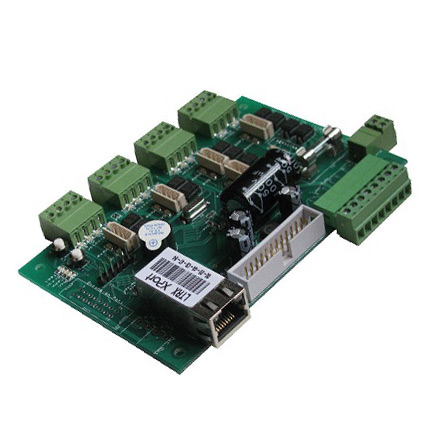The Allure of Grey Low E Glass A Comprehensive Guide
Introduction
Grey low E glass, a type of energy-efficient glass with a grey hue and low emissivity (E), has been gaining popularity in the construction industry due to its numerous benefits. This article delves into the various aspects of grey low E glass, including its properties, applications, and advantages over other types of glass.
Properties of Grey Low E Glass
1. Low Emissivity Grey low E glass has a low emissivity value, which means it reduces the transfer of heat through radiation. This property makes it an excellent choice for improving the energy efficiency of buildings, reducing heating and cooling costs.
2. Grey Tint The grey hue of grey low E glass provides an aesthetic appeal while also filtering out excessive sunlight, reducing glare and heat gain. This makes it suitable for both residential and commercial applications.
3. Durable Grey low E glass is made using high-quality materials and is designed to withstand harsh weather conditions, making it a long-lasting solution for windows and doors.
4. Safety This type of glass meets or exceeds safety standards, providing impact resistance and preventing broken glass from scattering, thus ensuring the safety of occupants.
Applications of Grey Low E Glass
1. Windows Grey low E glass is commonly used in windows to improve energy efficiency, reduce heat loss in winter and heat gain in summer, and provide privacy.
2. Doors This type of glass can also be used in doors to enhance their insulation properties and provide a stylish appearance.
3
3

3
3
 grey low e glass
grey low e glass. Skylights Grey low E glass can be installed in skylights to diffuse sunlight evenly throughout a room, reducing glare and heat gain.
4. Curtain Walls This glass can be used in curtain walls to create a sleek and modern facade while also improving energy efficiency.
Advantages of Grey Low E Glass
1. Energy Savings By reducing heat loss and gain, grey low E glass helps to lower energy consumption and reduce utility bills.
2. Environmental Friendliness This type of glass contributes to the reduction of greenhouse gas emissions by improving building insulation and reducing the need for artificial heating and cooling.
3. Improved Comfort By filtering out excessive sunlight and reducing glare, grey low E glass creates a more comfortable indoor environment.
4. Enhanced Aesthetics The grey hue and low E properties of this glass make it an attractive option for both residential and commercial projects, enhancing the overall design and functionality of a space.
Conclusion
Grey low E glass is a versatile and energy-efficient solution for various applications in the construction industry. Its ability to reduce heat loss and gain, improve comfort, and enhance aesthetics makes it a popular choice among homeowners, architects, and builders. As awareness of the importance of energy efficiency and sustainability continues to grow, grey low E glass is expected to play an increasingly important role in shaping the future of building design and construction.


 3
3
3
3 grey low e glass. Skylights Grey low E glass can be installed in skylights to diffuse sunlight evenly throughout a room, reducing glare and heat gain.
4. Curtain Walls This glass can be used in curtain walls to create a sleek and modern facade while also improving energy efficiency.
Advantages of Grey Low E Glass
1. Energy Savings By reducing heat loss and gain, grey low E glass helps to lower energy consumption and reduce utility bills.
2. Environmental Friendliness This type of glass contributes to the reduction of greenhouse gas emissions by improving building insulation and reducing the need for artificial heating and cooling.
3. Improved Comfort By filtering out excessive sunlight and reducing glare, grey low E glass creates a more comfortable indoor environment.
4. Enhanced Aesthetics The grey hue and low E properties of this glass make it an attractive option for both residential and commercial projects, enhancing the overall design and functionality of a space.
Conclusion
Grey low E glass is a versatile and energy-efficient solution for various applications in the construction industry. Its ability to reduce heat loss and gain, improve comfort, and enhance aesthetics makes it a popular choice among homeowners, architects, and builders. As awareness of the importance of energy efficiency and sustainability continues to grow, grey low E glass is expected to play an increasingly important role in shaping the future of building design and construction.
grey low e glass. Skylights Grey low E glass can be installed in skylights to diffuse sunlight evenly throughout a room, reducing glare and heat gain.
4. Curtain Walls This glass can be used in curtain walls to create a sleek and modern facade while also improving energy efficiency.
Advantages of Grey Low E Glass
1. Energy Savings By reducing heat loss and gain, grey low E glass helps to lower energy consumption and reduce utility bills.
2. Environmental Friendliness This type of glass contributes to the reduction of greenhouse gas emissions by improving building insulation and reducing the need for artificial heating and cooling.
3. Improved Comfort By filtering out excessive sunlight and reducing glare, grey low E glass creates a more comfortable indoor environment.
4. Enhanced Aesthetics The grey hue and low E properties of this glass make it an attractive option for both residential and commercial projects, enhancing the overall design and functionality of a space.
Conclusion
Grey low E glass is a versatile and energy-efficient solution for various applications in the construction industry. Its ability to reduce heat loss and gain, improve comfort, and enhance aesthetics makes it a popular choice among homeowners, architects, and builders. As awareness of the importance of energy efficiency and sustainability continues to grow, grey low E glass is expected to play an increasingly important role in shaping the future of building design and construction.